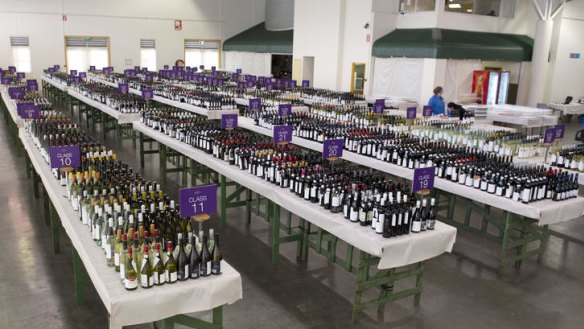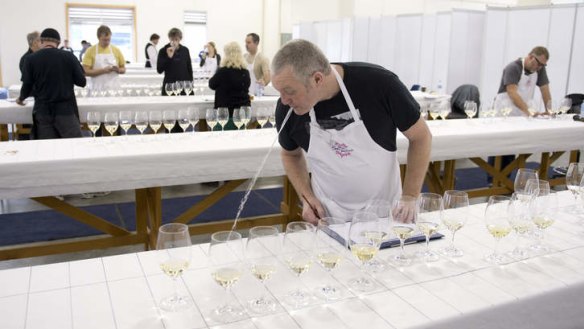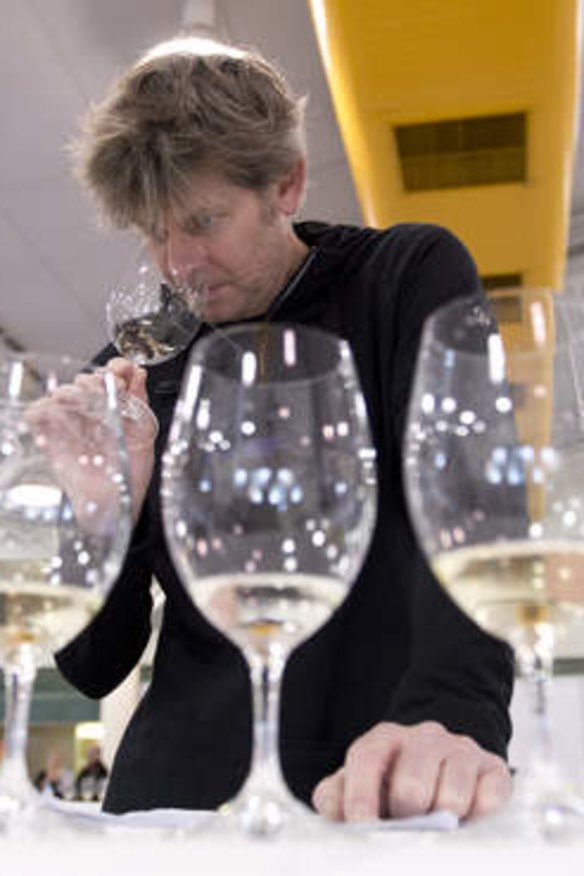Good show: a tasty introduction to wine judging
Natascha Mirosch goes behind the scenes at the Royal Queensland Wine Show.

They don't usually welcome strangers round here. Especially nosy ones with notepads. But in the new spirit of openness, I've been invited to observe the RNA Royal Queensland Wine Show judging.
Without the show's happy crowds, noise and unique smell (hot grease, dust, fairy floss and animal dung) the empty grounds feel slightly spooky. But behind the scenes there's a surprising amount of activity with the judging of lamb and beef, wine and dairy, and more, in the lead-up to the Ekka.
The Royal Queensland Wine Show has been in existence since 1876 and is the state's biggest, with wines from all over the country put to the test. History relates that at the very first show, Queensland celebrated a minor success with a local winemaker. "Mr G. S. Lambert" of Lambert's winery in Indooroopilly was awarded first prize for the “best full-bodied red wine older than 1874", namely Lambert's Brisbane Burgundy and Hermitage. Today, the glass doors of the meat pavilion, where the wine judging takes place, are covered with lengths of material so no one (the judges in particular) can see in. They taste the wine blind and are not allowed as much as a glimpse of the bottles. Inside, the huge industrial space is divided into two. In one half the judges stand at narrow tables and tip glasses this way and that; smelling, swirling, sipping, spitting and scribbling. On the other side of the dividers are seas of numbered tables, with bottles and glasses representing the different classes. Entrants have to submit five bottles for judging, which means there are around 9000 bottles on the tables today.
Compared to the hushed and measured pace of the judging room, it's a hive of activity here as back of house staff make sure everything is strictly regulated – that the bottles don't get mixed up, that they are opened no more or less time than the regulation 40 minutes for reds and 20 minutes for white, and that clean glasses are always ready.
All the stewards are volunteers. Some, like Inger Kelly and Heidi Bracko, have been doing it for a decade or more. Steward Graeme Kovalesky (a double decader) walks past with two full trays of Riedel glasses casually stacked on top of each other. It's a testament to the skill of the volunteers that less than a tray are MIA by the end of the wine show.
Next door, despite the early hour, tasting is already in progress. Throughout the course of the day the judges will taste up to 100 wines each - a recently imposed limit that is part of sweeping wine show reforms, designed to make sure judges aren't fatigued or that their sense of taste is not compromised after too many glasses.

There are 12 judges (a mix of winemakers, scientists, wine writers and sommeliers) and six "associate" judges (trainees), overseen by a chief judge. They're divided into teams with each member assigned a class to taste. In total there are 91, from "dry semillon" to shiraz and every shade of gold, pink and red in between.
According to chief judge, P.J. Charteris, the class sizes haven't varied much over the years, with shiraz and chardonnay still dominating. Last year, the show introduced a 100 point grading system, used by a number of prominent wine critics worldwide and considered to be more easily understood by consumers. Other changes include creating a new class for single vineyard wines and "regional rosettes," awarded to the best wine from a particular region. Thus, a Hunter Valley shiraz may compete for medals with shiraz from all over the country, but it may also be awarded a rosette as the best Hunter Valley shiraz.
Both red and white wines are served in the same standard glass with judges looking at colour, bouquet, condition and flavour. At one end of the table is a plate of palate cleansers - fruit, biscuits and cheese, and, to one side, industrial sized "spit buckets".

Proceedings are temporarily interrupted as a judge calls his or her teammates together over his table and a quiet discussion ensues. This happens when they believe they've come across a medal winner while tasting. Charteris, who is a winemaker and has been judging for over 20 years, joins them to give his opinion. He can overrule the judges, but more often, he says, they are in agreement. A wine being considered for a gold medal or trophy may be tasted as many as a dozen times.
At the end of each class (which can go for over an hour), there are further discussions about potential winners. If there is no wine considered good enough, no medal or trophy is awarded.
The results are nutted out with the adjudication of the chief judge and announced at a gala dinner at the end of the week. And so the show wraps up for another year with judges and volunteers relaxing (with a beer or two apparently) before going back to their day jobs.
But what happens to the leftovers of those 9000 bottles? In the spirit of waste-not-want-not, the public are invited to come and taste the medal winners and judge for themselves.
For tickets to the public tasting tonight, go to the RNA Wine Show website. The complete results of the 2013 Royal Queensland Wine Show including medals and trophy winners will be available on their website on Saturday.